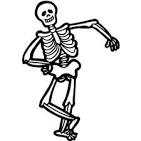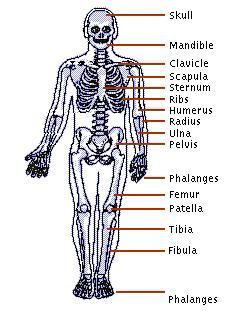Yes, the children will let you know that the blockbuster Disney movie, Frozen, can be an inspiration for anything and everything cold and icy. You don’t need any cryokinetic powers to produce ice and snow. Depending on where you live, just venture outside or open the freezer. Most of these activities take little or no preparation…and remember, it’s the process, not the finished product…so “Let It Go” if you think the end result is for children to make something that looks like something recognizable (i.e., providing a pattern of a snowflake or snowman to use with the art medium). Have fun discovering the science in these activities while exploring with art! As Olaf said, “Some people are worth melting for.” I think the children will agree.

 Rainbow Snow Painting
Rainbow Snow Painting
Fill spray bottles half full with Colorations® Liquid Watercolor™ (do not dilute the color by adding water). If you have snow, go outside and have fun spray-painting snow. If it gets too cold and fingers in mittens don’t work too well with the trigger sprayers (my favorite sprayers are the ones from Ace® Hardware), let the children scoop the snow in buckets and bring it inside to your water table. Spray away. Observe how the colors blend to make new colors. Way cool!
Paintsicles
Squeeze Colorations® Liquid Watercolor™ or BioColor® into ice cube trays. Cover trays with aluminum foil and insert craft sticks (poke through foil) into each cube. Place trays in freezer overnight. Pop paintsicles out of the trays. Provide heavy white paper or tagboard and using the craft stick as a handle, children paint the entire paper with bright blocks of color.
Ice Designs
Draw designs on heavy white paper with a washable marker. Using plain ice cubes, children “paint” over the designs and watch how the colors soften and blend.. Ice Castles
Ice Castles
Materials Needed:
Ice—cubes, blocks, etc.
Table salt
Rock salt
Kosher salt (optional)
Eye droppers
Colorations® Liquid Watercolor™
Sensory tub or water/sand table
Small containers/cups to hold the salt and Liquid Watercolor™
Procedure:
- Freeze water in a variety of sizes and shapes of empty containers—plastic bowls, jello molds, cardboard milk containers, ice cube trays, etc. In cold climates, children could put the containers of water outside to freeze.
- Empty the ice shapes and ice cubes into the sensory tub or water table.
- Place small cups of salt and rock salt in the tub.
- Place small cups of Liquid Watercolor™ in tub. Add an eye dropper to each cup.
- Problem solve with the children how best to use the ice to form ice castles, deciding which blocks of ice would be best on the bottom and which would work better on the top. Children can sprinkle the salt on top of each chunk of ice before adding another piece. Talk with them about how the salt begins to melt the ice. Then when another piece is added, the water refreezes and becomes part of the newly added piece of ice, helping it to stick together creating ice castles.
- Children then use the droppers to drop the Liquid Watercolor™ into the cracks and holes created by the rock salt and salt making a colorful kingdom.
Learning Outcomes/Desired Results:
- Cognitive-Science – Cause and Effect: Discuss the chemical reaction that ice has when salt is sprinkled on it. Salt lowers the freezing point of ice, causing it to melt.
- Cognitive-Science – Cause and Effect: Solids transforming into liquids.
- Cognitive-Science – Cause and Effect: Mixing primary colors (red, yellow and blue) you make the secondary colors (orange, green and purple).
- Physical-Fine Motor Skills: Using small muscles (pincher grasp) in fingers to squeeze the bulb of the dropper and to pick up grains of salt and chunks of rock salt.
- Physical-Fine Motor Skills – Eye-Hand Coordination: Hands and eyes working together to accomplish a task; using fingers to manipulate dropper with color and squirting colors into salt crevices.
- Cognitive-Problem Solving and Critical Thinking: Some children will have difficulty in figuring out how to get the color into the dropper and then onto the ice. Handling the eye dropper will be a challenge, so they should be shown how to use it and encouraged to keep trying until they succeed.
- Language Development: Children talk excitedly about what they see happening.
- Encourages creativity and persistence.
- Social/Emotional Development: Fostered as this is an open-ended activity with no right or wrong way to do this activity. It promotes children’s self-esteem.

 Nature’s Frozen Beauty
Nature’s Frozen Beauty
Freeze nature items (leaves, pine needles, flowers, berries, small rocks) in silicone cupcake liners or an aluminum or silicone cupcake/muffin tray. Let the children put items (flower, leaf, etc.) of their choice into each of the cupcake liners. Then fill them halfway with water. Before putting them into the freezer or outside, insert a paper clip (open half-way) into each cupcake liner that will be used to hang up the frozen decorations. Once frozen, pop them out of their mold (cupcake liner or tray) and decorate your outdoor environment by having the children hang them on tree branches, fences or whatever else will support the icy decoration. As the temperature warms up and the sun comes out, the children will observe and discover what happens to their once frozen beautiful decorations.
Product Recommendations:
Ultimate BioColor® Creativity Kit (BCKIT3)
Colorations® Liquid Watercolor™ Classroom Favorites Pack (LWKIT4)
E-Z Pull Extra Large Clear Trigger Sprayers, 12 oz. – Set of 6 (TSBOT)
Super Safe Plastic Droppers – Set of 12 (12SSD)
6 Paint Cups in a Base (PNTCPS)
Best Value Sand & Water Activity Table – Medium (LWTAB)
Sand and Water Buckets – Set of 6 (BUCKSET)
Indestructible Scoops – Set of 4 (SCOOP4)
Regular Craft Sticks – 100 Pieces (CRAF)
White Sulfite Paper – 500 Sheets ((A80SU)
Extra Sturdy Tagboard – 100 Sheets (9WT)
Colorations® Super Washable Chubby Markers (16CHB)























